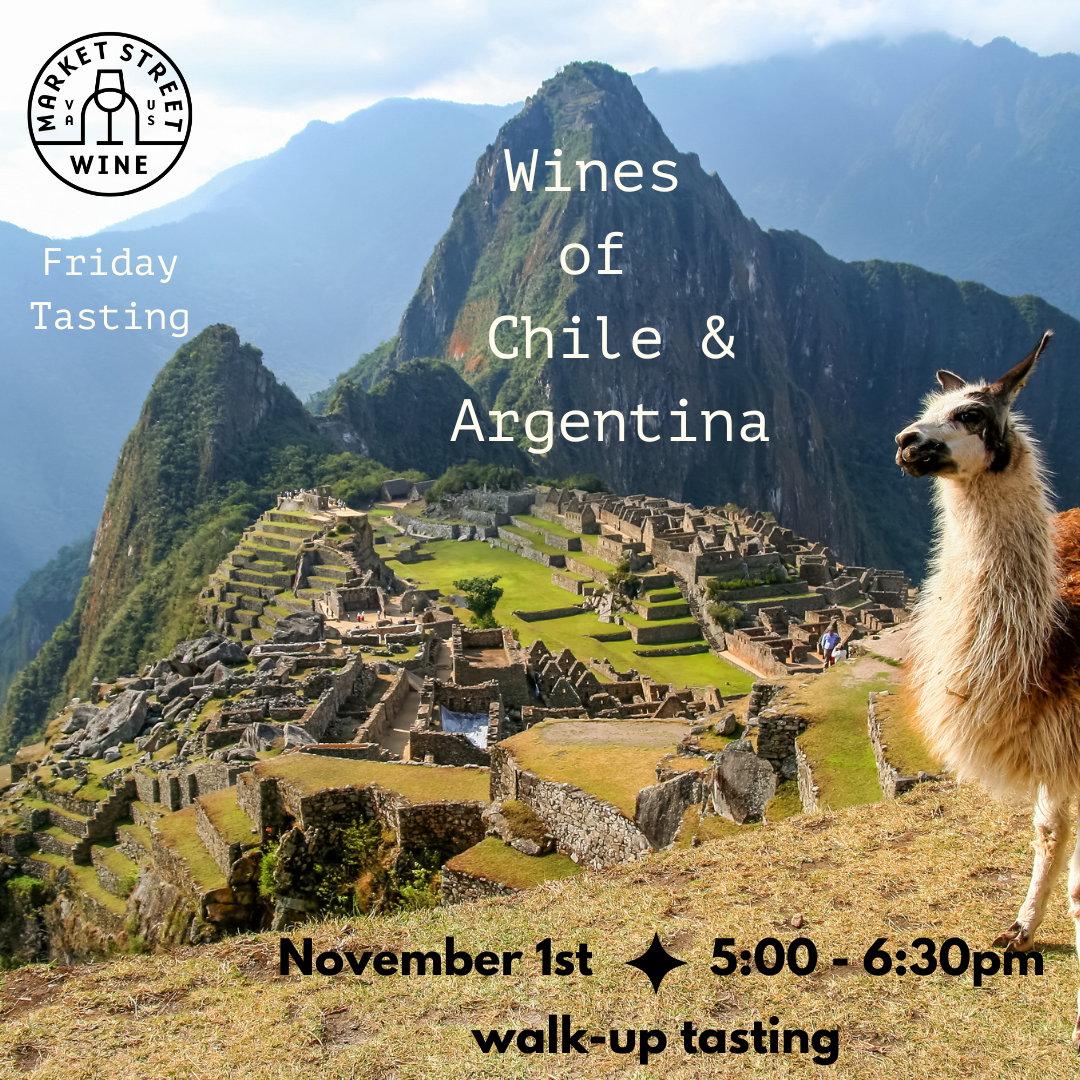Further Down South
The history of Chilean and Argentine winemaking is inseparable from the history of the European invasion and colonization of South America, as that history starts in the 1500s with Spanish conquistadors hitting the shores of our neighbor continent to the south.
The Jesuit missionaries that accompanied the conquistadors brought the first grape vines to the land so that they could make wine for their masses. First they came to what would be Chile and then moved inland to what would become Argentina. Over three hundred years later, the late 19th century European phylloxera blight followed by WWI at the beginning of the 20th spurred another wave of European immigration to South America. Spanish, Italians, and French came both to Chile and Argentina and brought their winemaking knowledge with them, causing an energetic boost to the winemaking in both countries.
To this day, the grapes grown in Chile and Argentina reflect this European heritage from Chardonnay to Sauvignon Blanc to Semillon to Moscatel to Carignan to Carmenère to Merlot to Cabernet Sauvignon and more. The closest thing to a native grape that Chile has is the Criolla grape (“Criolla” meaning Spanish in origin) País. Descended from Listán Prieto — a grape originally from Castilla-La Mancha but no longer found there today — País has become Chile’s most famous unique grape. Chile is also the land of old vine European wines, as it is the only winemaking country to be free of the evil phylloxera pest.
Any discussion of Argentina and signature grapes starts and ends with two men — Domingo Faustino Sarmiento and Michel Aimé Pouget. In the mid-1840s, Pouget was a renowned ampelographer (an expert in grape varieties), who was one of a handful of Europeans who had been brought to Chile to help grow its wine industry. He started an agronomy institute and brought French grapes to the Andes. Over in Argentina, Sarmiento — who would later become president — was the governor of the Cuyo region. He was interested both in better education and better Argentine wine. So, in the 1850s, when he heard what Pouget was doing in Chile, Sarmiento invited him to do the same in Argentina. As asked, Pouget built a school and brought with him Cabernet Sauvignon, Pinot Noir, Merlot, and a little regarded grape from the southwest of France, Cot — what we more commonly refer to as Malbec. Malbec took well to the terroir around the Andes, out performing the Criolla grapes. Still today, Malbec only has a small French footprint, while it is in Argentina, that it has become an international star.
This Friday, please join guest pourer Heather from wine distributor Potomac Selections as we focus on the wines of Chile and Argentina. This is another of our much loved free walk-up tastings. You’re welcome to step in any time in the hour and a half.

